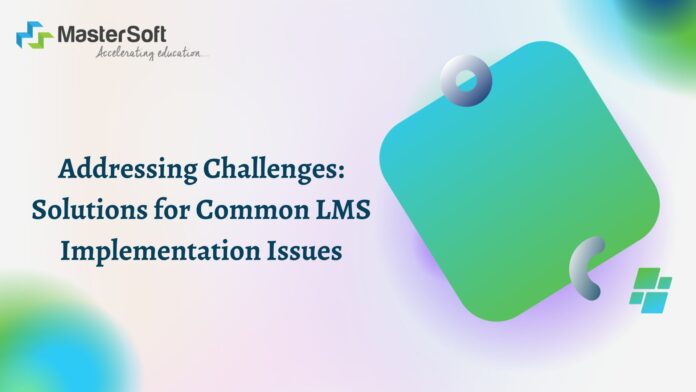In the ever-evolving realm of education, Learning Management Systems (LMS) play a pivotal role in facilitating seamless and efficient learning experiences. However, despite their transformative potential, LMS implementations often encounter a myriad of challenges. In this blog post, we will explore some common issues faced during LMS implementation and unveil practical solutions to navigate these obstacles.
- Resistance to Change
One of the primary challenges in learning management system implementation is resistance to change. Teachers, administrators, and even students may be accustomed to traditional methods, making it challenging to embrace new technologies.
Solution: Prioritize comprehensive training programs to familiarize stakeholders with the LMS. Offer hands-on workshops, create user-friendly guides, and emphasize the benefits of the LMS in terms of time efficiency and enhanced learning outcomes.
- Integration Issues
Many educational institutions use various tools and platforms for different aspects of teaching and learning. Integrating these diverse systems with the LMS can be a significant hurdle.
Solution: Choose an LMS with robust integration capabilities. Conduct a thorough compatibility analysis before implementation and collaborate with vendors to ensure seamless integration. APIs and middleware solutions can also facilitate smooth data exchange between systems.
- Insufficient Technical Support
Inadequate technical support can be a major roadblock during and after LMS implementation. Users may face challenges or encounter technical glitches, leading to frustration and a decline in system adoption.
Solution: Establish a dedicated support system, including a helpdesk and a knowledge base. Provide ongoing technical training for administrators and support staff. Collaborate with the LMS provider to ensure timely updates and responsive customer support.
- Data Security Concerns
As LMS deals with sensitive student and organizational data, ensuring robust security measures is crucial. Concerns about data breaches and unauthorized access can hinder the implementation process.
Solution: Prioritize data security from the outset. Choose an LMS Software with robust encryption protocols and compliance with data protection regulations. Educate users on best practices for securing their accounts and regularly update security protocols to stay ahead of potential threats.
- Inadequate Content Management
Effectively managing and organizing content within the LMS can be challenging, leading to confusion and inefficiencies in the learning process.
Solution: Implement a well-structured content management strategy. Utilize tagging, categorization, and metadata to organize content systematically. Offer training on content creation and organization to educators, empowering them to optimize the learning materials.
- Lack of Customization Options
Every educational institution has unique needs and preferences. A one-size-fits-all approach in LMS design may not align with the specific requirements of a particular institution.
Solution: Choose an LMS that offers customization options. Ensure that administrators can tailor the interface, features, and functionalities to meet the institution’s specific needs. This flexibility enhances user satisfaction and promotes system adoption.
- Inadequate Scalability
As institutions grow, their learning management needs evolve. Some LMS solutions may struggle to scale effectively, leading to performance issues and system constraints.
Solution: Prioritize scalability when selecting an LMS. Choose a solution that can accommodate the institution’s growth without compromising performance. Regularly assess the scalability of the system and invest in upgrades or additional resources as needed.
- Limited User Engagement
Low user engagement can undermine the success of an LMS implementation. If educators and students do not actively participate, the full potential of the system remains untapped.
Solution: Implement strategies to enhance user engagement. Encourage collaboration through discussion forums, integrate multimedia elements into courses, and leverage gamification techniques to make learning more interactive and enjoyable.
Learning Management System: In the context of education and training, LMS typically refers to a Learning Management System. It’s a software application or web-based technology used to plan, implement, and assess a specific learning process. LMS platforms are often used in educational institutions, businesses, and organizations to manage and deliver online courses and training programs.
Conclusion
While LMS implementation may present its fair share of challenges, proactive planning and strategic solutions can transform these obstacles into opportunities for growth and improvement. By addressing resistance to change, ensuring seamless integration, providing robust technical support, prioritizing data security, optimizing content management, offering customization options, ensuring scalability, and enhancing user engagement, educational institutions can unlock the full potential of Learning Management Systems, fostering a dynamic and effective learning environment for all stakeholders.












